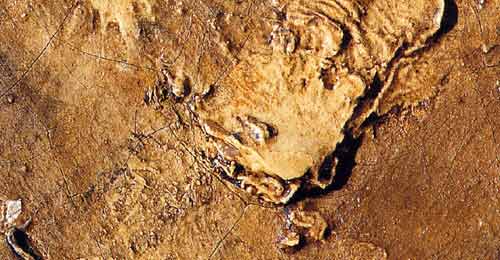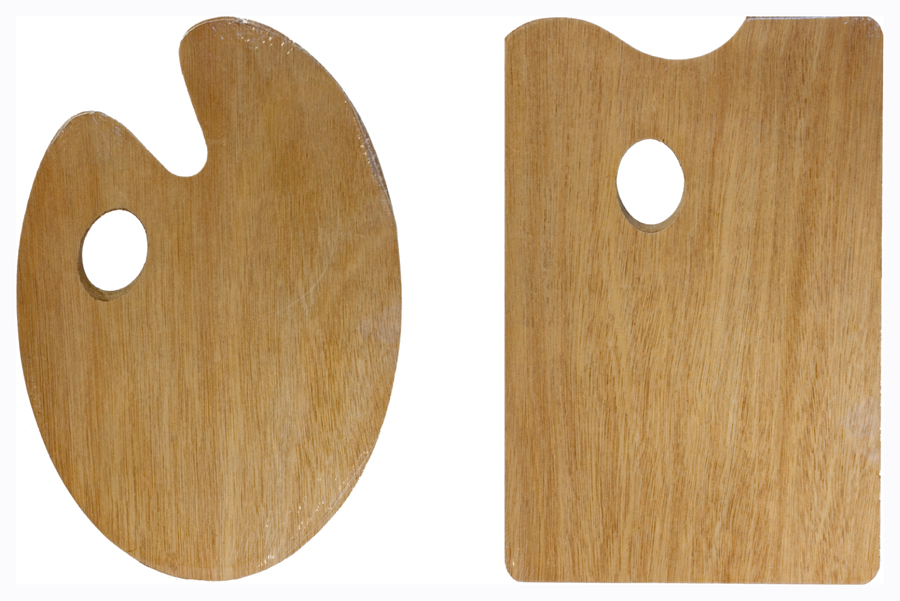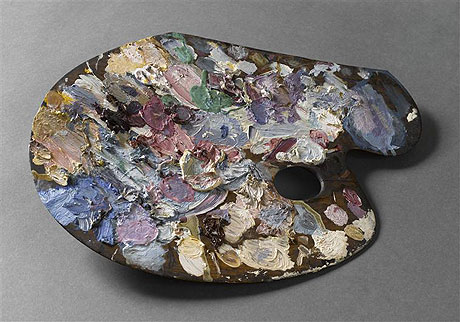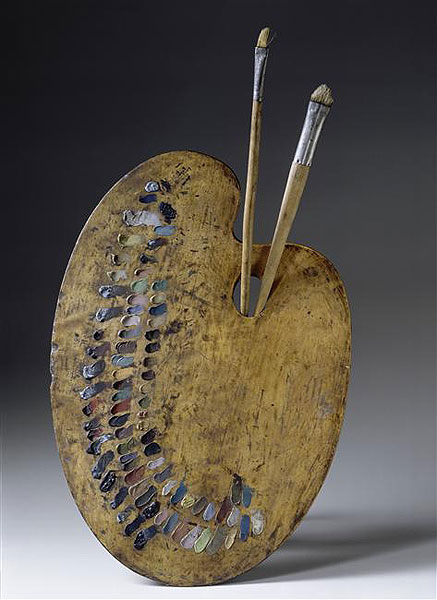On 26 May, 2013 With
Oil painting lessons and techniques: PALETTES Cleanliness —The cleanliness of a palette consists in its being always in such a condition that you can handle it without getting dirty; that the mixing-surface will not foul the freshly mixed paint; and that the paint around the edge is always so that you can pick up a fresh, clean brushful. If you try to clean off all your color every day and polish your palette nicely, you will not only take up more time with your palette than you do with your painting, but the fact that some left-over paint may be wasted will make you a little stingy in putting on fresh paint, which is one of the worst habits…
Read More
On 1 Oct, 2012 With
Oil painting materials and techniques: PALETTES The most important qualities in a palette are that it should be large enough, and that it should balance well on the thumb. Whether it is round or square is a slight matter. The oval palette is usually best for the studio because the corners are seldom of use, and add weight. But for sketching, the square palette fits the box best. Get a palette much larger than you think you want. When you get it on your thumb the mixing-surface is much less than there seemed to be before it was set, for all the actual surface is between the row of colors and the thumb. If the palette…
Read More
On 1 Aug, 2012 With
How to economize on Oil Painting Tools There is a false implication in the saying that “a poor workman blames his tools.” It is not true that a good workman can do good work with bad tools. On the contrary, the good workman sees to it that he has good tools, and makes it a part of his good workmanship that they are in good condition. In painting there is nothing that will cause you more trouble than bad materials. You can get along with few materials, but you cannot get along with bad ones. That is not the place to economize. To do good work is difficult at best. Economize where it will not be a hindrance to you. Your…
Read More
On 1 Sep, 2011 With
Palettes of Famous Painters Of Gustave Moreau, the art critic Charles Blanc, whose writings (still essential reading) and triangle based colour-system are considered the most influential texts on colour theory, wrote in Le Temps, 1881: “One would have to coin a word for the occasion if one wished to characterise the talent of Gustave Moreau, the word colourism for example, which would well convey all that is excessive, superb and prodigious in his love for colour. … It is as if one were in the presence of an illuminator who had been a jeweller before becoming a painter and who, having yielded to the intoxication of colour, had ground rubies, sapphires, emeralds, topazes, opals, pearls and mother of pearl to…
Read More
On 30 Aug, 2011 With
Palettes of Famous Painters Some artists follow Whistler, who believed the management of the palette to be the basis of good painting; others stick to Isaac Newton’s theory of colour. Some artists mix every gradation of colour they will need for a painting before they start, others as they need them. “My freshly arranged palette, brilliant with contrasting colors, is enough to fire my enthusiasm,” noted Delacroix in his Journal in 1850. The French artist was meticulous in his arrangement of colours, and when unwell, would take his palette to bed and spend the entire day just mixing new shades.
Read More





